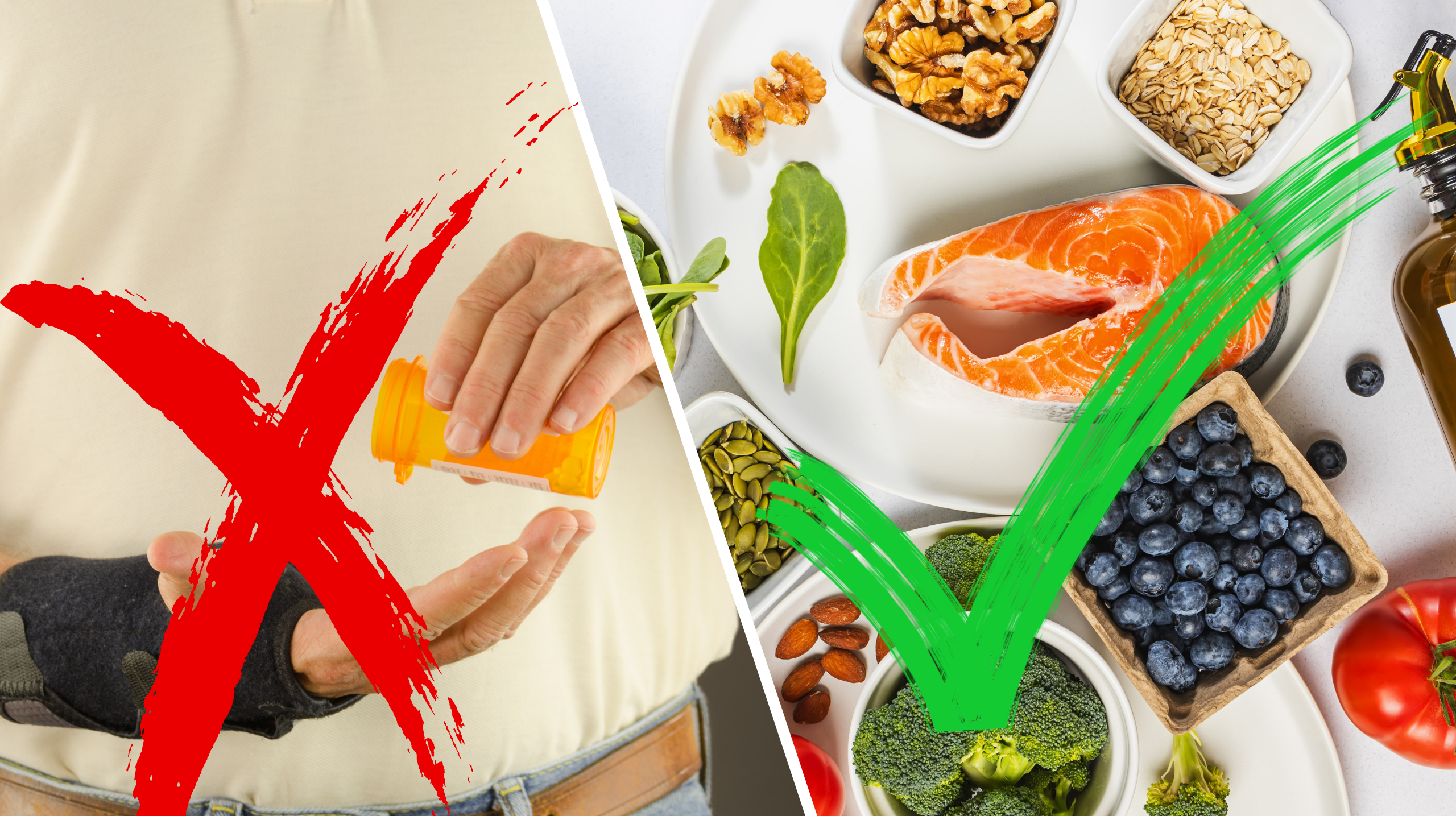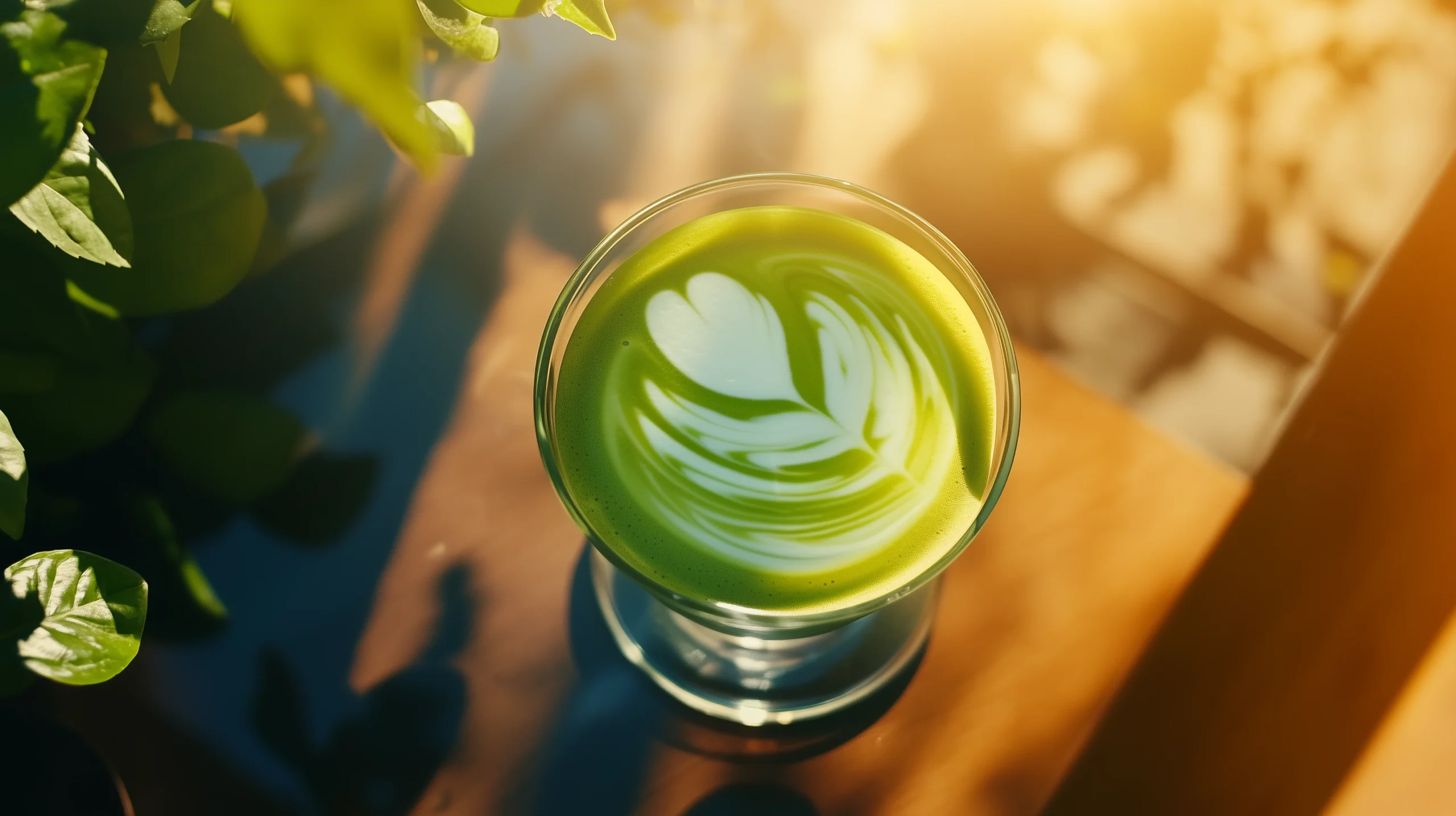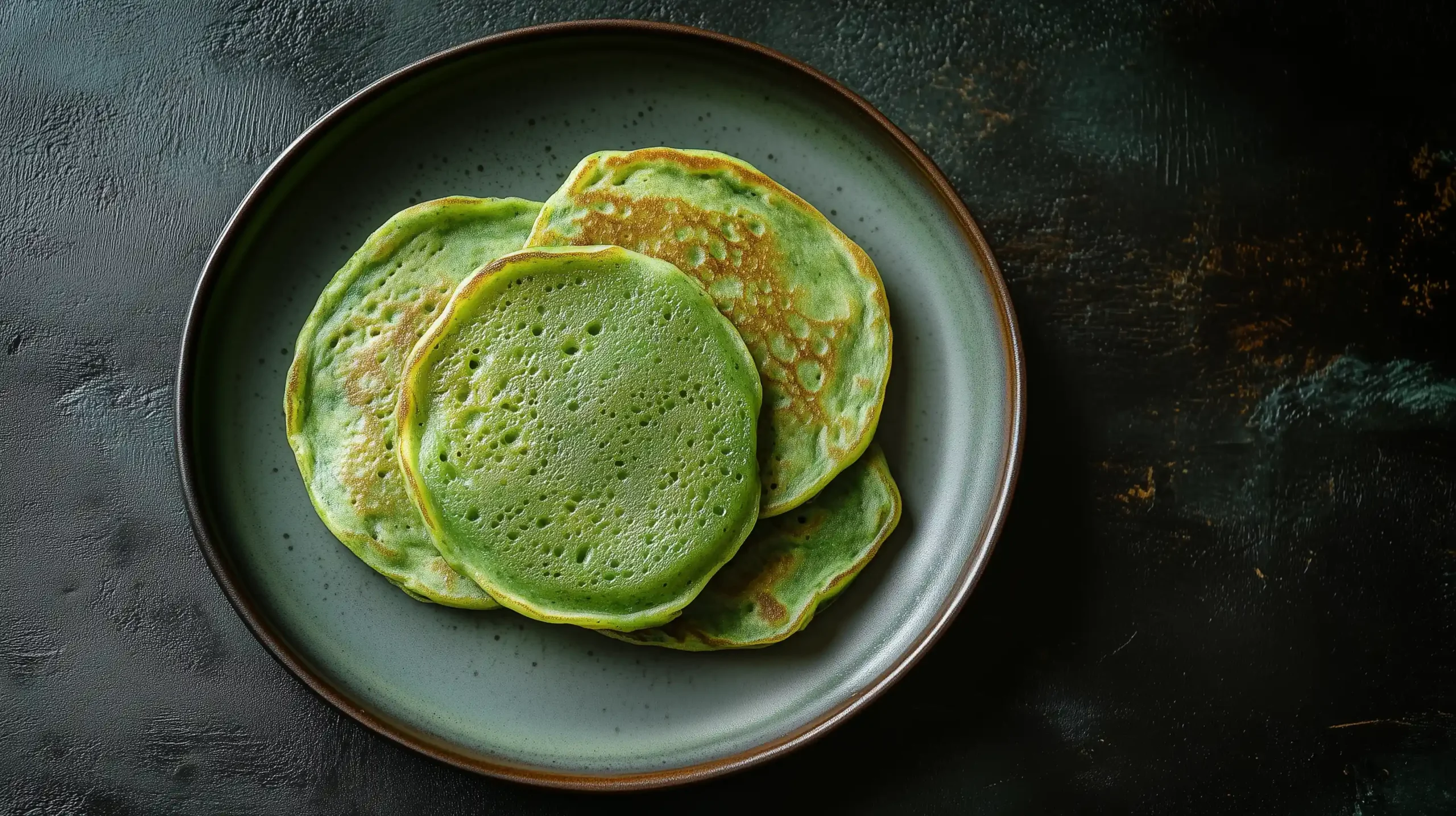101 Anti-Inflammatory Ingredients and How to Use Them
Inflammation is the your body’s natural response when the immune system recognizes an abnormality such as trauma, sickness, high levels of foreign chemicals, etc. Chronic inflammation, or severe inflammation left untreated, can lead to various and long-term health problems. Here are 101 ingredients that have anti-inflammatory properties, each with a brief synopsis and example of how you can use them as part of your daily meal planning.
1. Matcha Green Tea
Rich in catechins, which reduce inflammation.
Example: Blend into smoothies or drink as a ceremonial tea.
2. Turmeric
A spice containing curcumin, known for its powerful anti-inflammatory effects.
Example: Add to curries or mix with warm milk for a soothing turmeric latte.
3. Ginger
A root with anti-inflammatory and antioxidant properties.
Example: Brew as tea or grate into stir-fries.
4. Olive Oil
High in oleocanthal, which mimics anti-inflammatory drugs.
Example: Drizzle on salads or use for cooking.
5. Blueberries
Packed with antioxidants called anthocyanins that combat inflammation.
Example: Top yogurt or blend into smoothies.
6. Salmon
Rich in omega-3 fatty acids that reduce inflammatory markers.
Example: Grill or bake with herbs and spices.
7. Spinach
High in anti-inflammatory compounds like kaempferol.
Example: Use in salads or sauté as a side dish.
8. Chia Seeds
Rich in omega-3 fatty acids and antioxidants.
Example: Add to oatmeal or make chia pudding.
9. Walnuts
Contain polyphenols and omega-3 fatty acids.
Example: Snack on raw or chop into baked goods.
10. Avocado
Loaded with monounsaturated fats and carotenoids.
Example: Mash for guacamole or slice onto toast.
11. Sweet Potatoes
Contain beta-carotene and fiber.
Example: Roast as wedges or mash as a side dish.
12. Garlic
Contains sulfur compounds that inhibit inflammatory pathways.
Example: Sauté with vegetables or use in marinades.
13. Beets
Rich in nitrates and pigments that reduce inflammation.
Example: Roast or blend into smoothies.
14. Broccoli
High in sulforaphane, an anti-inflammatory compound.
Example: Steam or roast with garlic.
15. Cinnamon
Contains cinnamaldehyde, which lowers inflammation.
Example: Sprinkle on oatmeal or bake into desserts.
16. Dark Chocolate
Rich in flavonoids that combat inflammation.
Example: Eat as a snack or melt into hot beverages.
17. Tomatoes
High in lycopene, an anti-inflammatory antioxidant.
Example: Use in salads or cook into sauces.
18. Pineapple
Contains bromelain, which reduces swelling and inflammation.
Example: Add to fruit salads or smoothies.
19. Green Tea
Contains EGCG, a potent anti-inflammatory compound.
Example: Brew as a beverage or use in cooking.
20. Kale
High in antioxidants like quercetin and kaempferol.
Example: Add to smoothies or sauté with garlic.
21. Flaxseeds
Rich in omega-3 fatty acids and lignans.
Example: Add to cereal or blend into baked goods.
22. Bell Peppers
Contain quercetin and vitamin C.
Example: Slice into salads or grill as a side.
23. Strawberries
Rich in anthocyanins and vitamin C.
Example: Use in desserts or blend into smoothies.
24. Almonds
Contain healthy fats and antioxidants.
Example: Snack on raw or slice into oatmeal.
25. Cloves
Rich in eugenol, which reduces inflammation.
Example: Use in spice blends or brew as tea.
26. Coconut Oil
Contains lauric acid, which has anti-inflammatory properties.
Example: Use for cooking or add to coffee.
27. Eggplant
Contains nasunin, an anti-inflammatory compound.
Example: Roast or add to casseroles.
28. Peaches
Rich in polyphenols and vitamin C.
Example: Add to yogurt or grill as a dessert.
29. Tart Cherries
High in anthocyanins and melatonin.
Example: Drink as juice or snack on dried.
30. Cabbage
Contains sulforaphane and glutamine.
Example: Ferment into kimchi or sauté with spices.
31. Black Pepper
Contains piperine, which enhances absorption of curcumin and reduces inflammation.
Example: Sprinkle on savory dishes or soups.
32. Oregano
Rich in antioxidants and phenolic compounds.
Example: Use in pasta sauces or sprinkle on pizzas.
33. Raspberries
Contain ellagic acid and anthocyanins.
Example: Add to smoothies or yogurt bowls.
34. Artichokes
Rich in cynarin and silymarin, which have anti-inflammatory properties.
Example: Steam or add to salads.
35. Lemons
High in vitamin C and flavonoids.
Example: Squeeze into water or over seafood.
36. Cranberries
Contain proanthocyanidins and antioxidants.
Example: Make cranberry sauce or add to oatmeal.
37. Zucchini
Contains antioxidants like lutein and zeaxanthin.
Example: Spiralize for zoodles or grill as a side dish.
38. Honey
Rich in polyphenols and natural anti-inflammatory compounds.
Example: Drizzle over tea or yogurt.
39. Basil
Contains eugenol and other anti-inflammatory oils.
Example: Add to pesto or sprinkle on salads.
40. Pumpkin
High in beta-carotene and antioxidants.
Example: Bake into pies or soups.
41. Mint
Contains rosmarinic acid, an anti-inflammatory compound.
Example: Brew as tea or garnish desserts.
42. Sesame Seeds
Rich in sesamin and sesamol.
Example: Sprinkle on salads or blend into tahini.
43. Papaya
Contains papain and antioxidants.
Example: Add to fruit salads or smoothies.
44. Watermelon
Rich in lycopene and water content.
Example: Enjoy as a refreshing snack or blend into juice.
45. Cucumber
High in water and antioxidants.
Example: Slice into salads or infuse in water.
46. Parsley
Contains flavonoids and vitamin C.
Example: Use as a garnish or blend into tabbouleh.
47. Quinoa
A complete protein with anti-inflammatory nutrients.
Example: Use as a base for salads or pilafs.
48. Peanuts
Contain resveratrol and healthy fats.
Example: Enjoy as peanut butter or roasted snacks.
49. Sunflower Seeds
Rich in vitamin E and selenium.
Example: Snack on raw or sprinkle on salads.
50. Mango
Contains vitamin C and beta-carotene.
Example: Blend into smoothies or enjoy fresh slices.
51. Apples
Rich in quercetin, which has anti-inflammatory effects.
Example: Snack on fresh or bake into pies.
52. Brown Rice
Contains anti-inflammatory lignans and fiber.
Example: Use as a side dish or in stir-fries.
53. Carrots
High in beta-carotene and antioxidants.
Example: Slice into salads or roast as a side.
54. Lentils
Rich in fiber and polyphenols.
Example: Use in soups or stews.
55. Pomegranates
Contain punicalagins and anthocyanins.
Example: Add to salads or enjoy as juice.
56. Cashews
High in healthy fats and antioxidants.
Example: Snack on raw or blend into creamy sauces.
57. Black Beans
Rich in fiber and anti-inflammatory flavonoids.
Example: Use in tacos or salads.
58. Brussels Sprouts
Contain glucosinolates and antioxidants.
Example: Roast or shred into slaws.
59. Fennel
Contains anethole, an anti-inflammatory compound.
Example: Slice into salads or roast as a side.
60. Seaweed
Rich in fucoidan, which reduces inflammation.
Example: Add to soups or sushi rolls.
61. Tofu
Contains isoflavones, which have anti-inflammatory properties.
Example: Stir-fry or grill as a protein source.
62. Asparagus
Rich in glutathione and anti-inflammatory compounds.
Example: Grill or steam as a side dish.
63. Hemp Seeds
Packed with omega-3 fatty acids and gamma-linolenic acid.
Example: Sprinkle on smoothies or mix into granola.
64. Cilantro
Contains dodecenal and anti-inflammatory nutrients.
Example: Use as a garnish or blend into sauces.
65. Barley
Rich in beta-glucans and polyphenols.
Example: Add to soups or use as a grain base.
66. Shiitake Mushrooms
Contain lentinan and beta-glucans.
Example: Sauté or add to soups.
67. Okra
Contains antioxidants like quercetin.
Example: Add to gumbo or roast as a side dish.
68. Cherries
Rich in anthocyanins and melatonin.
Example: Snack fresh or bake into desserts.
69. Plums
High in polyphenols and vitamin C.
Example: Slice into salads or blend into smoothies.
70. Cayenne Pepper
Contains capsaicin, which has anti-inflammatory effects.
Example: Sprinkle on dishes or add to sauces.
71. Pecans
Rich in healthy fats and polyphenols with anti-inflammatory properties.
Example: Sprinkle on salads or use in baking.
72. Leeks
Contain kaempferol and allicin, both reducing inflammation.
Example: Add to soups or sauté as a side dish.
73. Pumpkin Seeds
Rich in magnesium and omega-3 fatty acids.
Example: Snack on roasted or sprinkle on salads.
74. Rosemary
Contains rosmarinic acid and antioxidants.
Example: Use as seasoning or brew as tea.
75. Cantaloupe
High in beta-carotene and vitamin C.
Example: Add to fruit salads or eat fresh.
76. Radishes
Contain anti-inflammatory isothiocyanates.
Example: Slice into salads or pickle as a garnish.
77. Turnips
Rich in vitamin C and glucosinolates.
Example: Roast or mash as a side dish.
78. Pears
Contain anti-inflammatory flavonoids and fiber.
Example: Eat fresh or bake into desserts.
79. Bok Choy
High in antioxidants and glucosinolates.
Example: Stir-fry or steam as a side dish.
80. Blackberries
Packed with anthocyanins and vitamin C.
Example: Add to smoothies or yogurt.
81. Mulberries
Rich in resveratrol and vitamin C.
Example: Snack on dried or use in baking.
82. Edamame
Contains isoflavones and antioxidants.
Example: Steam as a snack or add to salads.
83. Grapes
High in resveratrol and flavonoids.
Example: Snack fresh or freeze as a treat.
84. Kimchi
A fermented food with probiotics and anti-inflammatory compounds.
Example: Use as a side dish or in stir-fries.
85. Yogurt
Rich in probiotics and anti-inflammatory nutrients.
Example: Eat plain or mix with fruit.
86. Goji Berries
Contain antioxidants like zeaxanthin.
Example: Add to trail mix or smoothies.
87. Fenugreek
Rich in anti-inflammatory compounds.
Example: Brew as tea or use in spice blends.
88. Amaranth
A gluten-free grain high in anti-inflammatory nutrients.
Example: Use as a porridge or salad base.
89. Pine Nuts
Contain vitamin E and anti-inflammatory fats.
Example: Add to pesto or salads.
90. Sea Buckthorn
Rich in omega-7 fatty acids and flavonoids.
Example: Use as a supplement or in juices.
91. Tahini
Made from sesame seeds, rich in sesamin.
Example: Use in dressings or as a spread.
92. Macadamia Nuts
Contain monounsaturated fats and flavonoids.
Example: Snack on raw or add to baked goods.
93. Coconut Water
Hydrating and rich in anti-inflammatory compounds.
Example: Drink as a refreshing beverage.
94. Bamboo Shoots
Contain anti-inflammatory phytosterols.
Example: Use in stir-fries or soups.
95. Dill
Rich in flavonoids and vitamin C.
Example: Use as a seasoning or in pickles.
96. Cardamom
Contains anti-inflammatory terpenes.
Example: Brew as tea or use in desserts.
97. Watercress
High in antioxidants and glucosinolates.
Example: Add to salads or blend into smoothies.
98. Horseradish
Contains glucosinolates and anti-inflammatory properties.
Example: Use as a condiment or in sauces.
99. Celeriac (Celery Root)
Rich in anti-inflammatory polyacetylenes.
Example: Mash as a side dish or add to soups.
100. Sage
Contains rosmarinic acid and flavonoids.
Example: Use in tea or as a seasoning.
101. Acai Berries
Rich in anthocyanins and antioxidants.
Example: Blend into smoothie bowls or juices.






